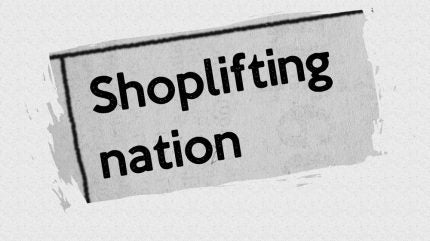
Australia’s retail crime has shifted from garden-variety mischief to full-blown menace.
Wesfarmers — the owner of Bunnings, Kmart, Target, Officeworks and Priceline — told investors its teams faced more than 13,500 threats and over 1,000 assaults in the past year, with several hundred incidents involving weapons.
Stores have responded with more security, body-worn cameras and de-escalation training, arguing the rise in shoplifting, retail violence and organised retail crime is now a frontline safety issue rather than a minor loss-prevention problem.
What’s changed on the shop floor
The pattern retail staff describe is simple and grim: more aggressive behaviour, more repeat offenders and more thefts involving everyday, high-resale items such as razors, baby formula and meat.
Wesfarmers says serious violent incidents at Bunnings have jumped sharply, while threatening behaviour across the Kmart Group has climbed too — a shift that tracks with what police and industry groups call a move from opportunistic stealing to organised, repeat offending.
That’s why some retailers are pushing tech solutions, though the debate is not straightforward; the privacy regulator last year found Bunnings had breached privacy law with earlier facial recognition use, underscoring the balance between staff safety and civil liberties.

US Tariffs are shifting - will you react or anticipate?
Don’t let policy changes catch you off guard. Stay proactive with real-time data and expert analysis.
By GlobalDataVictoria is the pressure point
Victoria stands out.
The state’s Crime Statistics Agency reports criminal incidents at record highs, driven in part by theft. Public data and police briefings point to a small cohort of repeat offenders doing a lot of damage — and retail theft rising by roughly a quarter year-on-year.
Retail bodies have urged a dedicated retail-crime police taskforce and tougher penalties, arguing that Victoria retail theft is now a system-level issue rather than isolated shoplifting.
On the ground, staff talk about flashpoints at self-checkouts, refund counters and closing time.
Managers say the goal is keeping people safe first, stock second — hence more guards in high-risk locations and clearer “no-go” policies for banned customers.
Investors have noticed, too; the issue was prominent enough at Wesfarmers’ AGM to make national headlines.
How the UK compares
The UK’s Office for National Statistics (ONS) recorded 529,994 shoplifting offences in the year to June 2025 — up 13% on the previous year — with business groups calling it a “retail crime crisis”.
Britain has leant into a national response that includes more neighbourhood officers, an offence for assaulting retail workers and guidance for forces on consistent shop theft policing.
Australia, by contrast, is still working state-by-state; industry wants a clearer national line on assaulting retail workers and serial shoplifters.
The direction of travel is the same in both countries; the difference is the UK has moved faster to standardise the response.
bottom line: the main keyword here — retail crime — now means more than a sneaky “five-finger discount.” For many Australian shop floors it means threats, assaults and organised crews.
The practical fixes are not flashy: consistent penalties for attacks on retail workers, targeted policing of repeat offenders, and technology that helps — without crossing privacy lines.
Until that lands, expect to hear more of the same weary plea from staff at the checkout: “Put it back, mate!”





